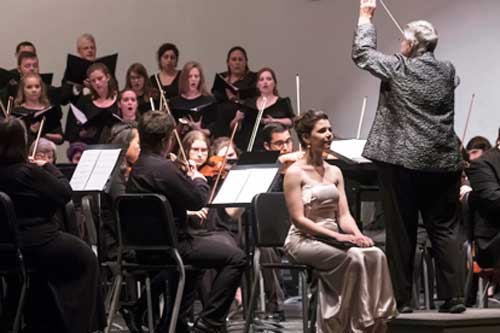Music professor Emmett Goods gives history a soundtrack.
Turbulent times stimulate genius, says Goods, an assistant professor in jazz studies, who teaches applied jazz and trombone as well as several music history classes at URI, including The History of Hip-Hop and Black American Culture and Music as a Form of Social Protest.
Students in his classes are served up a sweeping history of American music that starts with folk, spirituals such as “Wade in the Water” and “Swing Low, Sweet Chariot,” and wends its way through jazz, blues, and rock and roll, before arriving at hip-hop. Along the way, students learn about how enslaved Black Americans imbued their spirituals and work songs with coded language to communicate their longing for freedom and how freedom singers of the 1960s took up those same songs in service to advancing the aims of the civil rights movement. In Goods’ classroom, songs such as Bob Dylan’s “Blowin’ in the Wind” and Crosby Stills Nash and Young’s “Ohio” become more to students than just their grandparents’ music. Such songs’ lyrics are examined and experienced both as criticisms of government and calls to action.
Art affords cover, Goods says. “You can say something in a song that you wouldn’t necessarily say with your regular voice in a crowd. If you can put your deepest, most heartfelt feelings to some chords and apply a melody to it, now you’ve provided this palette by which you can express what it is that you really feel — and give people an opportunity to kind of step back and know that this is art and this is artistic expression.”
Bridging differences
Music can also be a way of bridging divides, as Sam Cooke demonstrated in his 1964 rendition of “This Little Light of Mine” at the Copacabana when he got a white audience to join him in singing a chorus of “Amen.” Art transcends human beings’ general unwillingness to listen to ideas they find abrasive, Goods says. “We need texture to soften the blow of the reality of hearing every person’s truth. When you put your protest into music, or you apply your deepest thoughts to music, you’ve taken a lot of the pressure off of somebody who is receiving your truth.”
In this way, music preserves and propels the message of Phillis Wheatley, Billie Holiday, Dr. Martin Luther King Jr., Cab Calloway, and many others—and it also makes room for contemporary issues and concerns, Goods says. “A student of mine did a research presentation on infant mortality rates. She had this hypothesis that you could look at artists like Beyoncé and other prominent Black female artists who have kind of put some things out there. It’s a quiet nod. So, if you listen, you hear things that are very tough or very personal.
“A lot of things that musicians talk about are things we need to be having further conversations about in society,” Goods says. “My father was a Vietnam War veteran, and he and my mother loved ‘Ohio.’ When it came on the radio, they turned it up. As a child, I had no idea of the feelings they were feeling when they heard the song, no idea of the emotions they were unpacking.
“I had to grow up before I could appreciate it, and now, every time I hear it, it’s not just that feeling of familiarity—of riding in the van with my dad or my mom cleaning the house on a Saturday morning—that I experience.
“It’s that the song is this beautiful tribute that these musicians put together to honor the lives of people standing up for what they believed in.”
–Marybeth Reilly-McGreen

